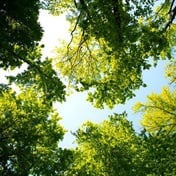Amid the highest recorded pollen counts in history, Health24 will be bringing you exclusive pollen count updates courtesy of the UCT Lung Institute's Allergy and Immunology Unit.
Here are the major city updates for 2 January:
Cape Town (Western Cape)
Tree, grass and weed pollen was low during this sampling period of cooler weather with moderate rain. Tree pollen identified was Casuarina and white stinkwood and weed pollen detected was goosefoot and Umbilliferae (celery, carrot or parsley family). Mould levels were uniformly low with a small but insignificant peak for rust spores.
Count: 2 (very low) [Last week: 5 (low)]
Johannesburg (Gauteng)
Very low fungal spore levels were detected at this sampling site during this week. Pollen levels were low. No grass pollen was detected, and tree pollen consisted of mulberry and eucalyptus only. Weed pollen levels were very low and consisted of English Plantain.
Count: 5 (low) [Last week: 1 (very low)]
Pretoria (Gauteng)
The fungal spore levels remained low at this sampling site throughout the week. Pollen levels were low and consisted of low grass counts, low trees including olive, eucalyptus, pine, yellowwood, acacia and oak. Weed pollen levels were low and consisted of daisy pollen only.
Count: 5 (low) [Last week: 1 (very low)]
Bloemfontein (Orange Free State)
Pollen levels in the categories: trees, grass and weed were all low. Tree types included birch, eucalyptus, white stinkwood and casuarina. Only fern spores were detected in the weed pollen category. Mould levels were generally low, but increased in response to rain and ascospores were seen in higher numbers.
Count: 5 (low) [Last week: 4 (low)]
Kimberly (Northern Cape)
All mould and pollen levels were very low during this sampling period of high temperatures and no rain. Only grass pollen was seen.
Count: 0 (very low) [Last week: 1 (very low)]
Durban (KZN)
High levels of mould spores were seen during this humid sampling week. Ascospores and Cladosporium reached high levels and basidiospores and epicoccum levels increased. Grass counts were low as were tree pollen levels (casuarina, birch, eucalyptus, pine and white stinkwood). Low levels of weed pollen were detected and these were: goosefoot, fern, daisy and Umbilliferae of the carrot, celery and parsley family pollen.
Count: 8 (moderate) [Last week: 4 (low)]
Port Elizabeth (Eastern Cape)
Mould and pollen levels were similarly low. Low grass levels were detected and the tree pollen: eucalyptus and pine. Only daisy pollen was identified in the weed category. High levels of particulate matter were noted.
Count: 1 (very low) [Last week: 1 (very low)]
See the full report HERE.
Reference ranges:
Overall, Trees, Grasses and Weeds all use the same values (grains per cubic metres of air).
Overall count is the daily average of pollen grains per cubic metres of air (trees plus grasses plus weeds)
In partnership with the the UCT Lung Institute's Allergy and Immunology Unit.
As the pollen problem worsens, precise and expanded monitoring becomes even more essential. And here's how you can help.
Image credit: Amelie & Niklas Ohlrogge, Unsplash




 Publications
Publications
 Partners
Partners















